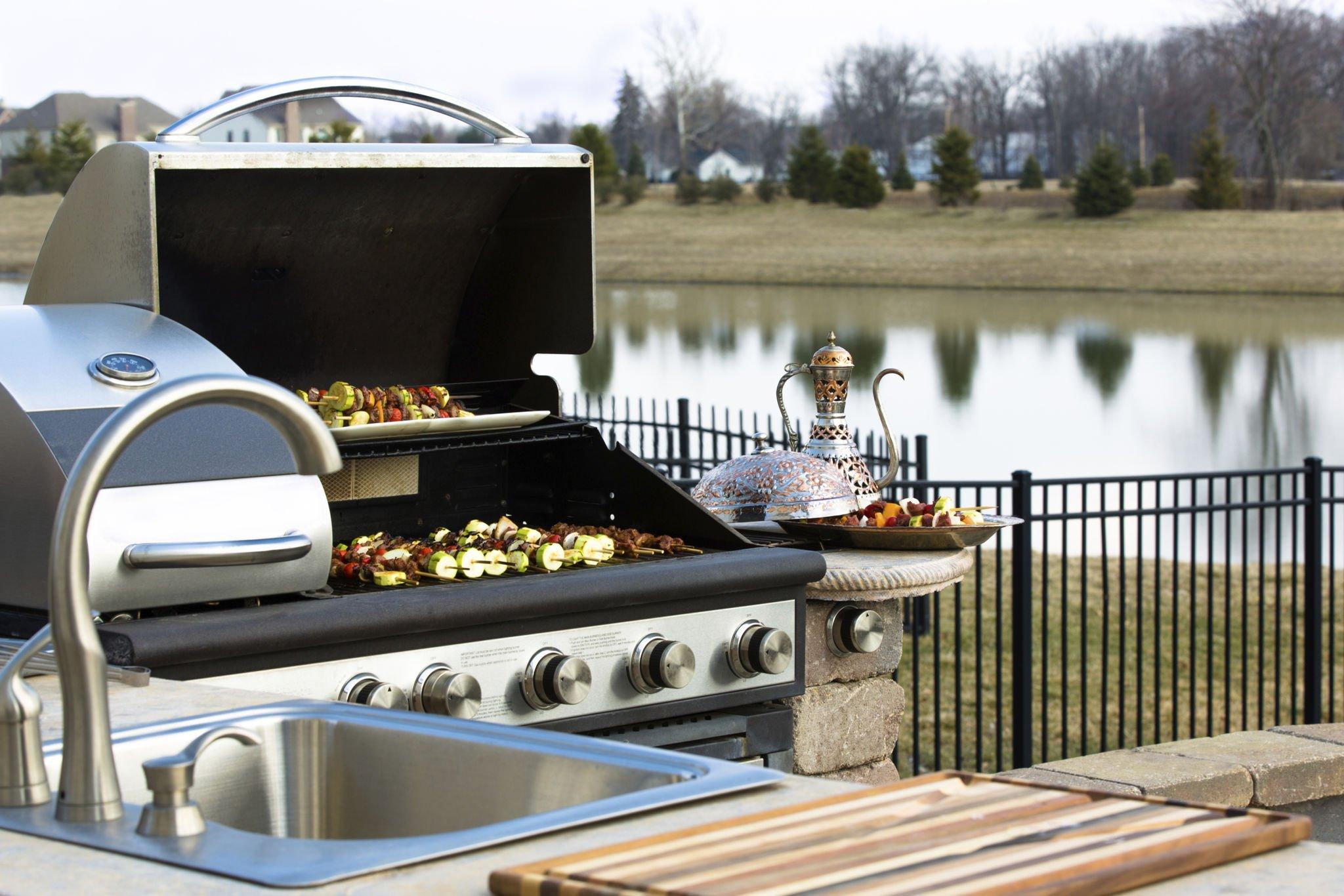Contents
Outdoor kitchens have become a popular addition to homes, offering a seamless blend of cooking and entertainment in the great outdoors.
Whether you love to grill, host parties, or simply enjoy the fresh air, an outdoor kitchen can elevate your outdoor living experience.

In this comprehensive guide, the experts at Kitchen Magic explore the art of outdoor kitchen design, covering everything from layout and appliances to materials and aesthetics.
So, let’s embark on a journey to create your dream outdoor cooking and dining space.
1. Define Your Purpose
The first step in outdoor kitchen design is to define your purpose. What do you want to accomplish with this space? Are you primarily looking for a cooking area with a grill, or do you desire a full-fledged culinary area with a sink, refrigerator, and dining table? Clarifying your intentions will guide the entire design process.
2. The Right Location
Choose the perfect location for your kitchen. It should be easily accessible from your indoor culinary space and living areas, yet positioned to take advantage of natural elements like shade and wind patterns.
The design should also consider factors like privacy, views, and safety.
3. Layout and Flow
Consider the layout of your outdoor cooking space. It should provide a functional flow, allowing for easy movement between the cooking, prep, and serving areas.
Many of these spaces adopt the “kitchen work triangle” principle, which arranges the grill, refrigerator, and prep space in a triangular layout for efficient cooking.

4. Appliances and Fixtures
Selecting the right appliances and fixtures is crucial. A high-quality grill is the centerpiece of any outdoor kitchen, but don’t stop there.
Consider adding side burners, sinks, refrigerators, and even warming drawers for versatility. Choose durable materials to withstand outdoor conditions.
5. Cabinetry and Storage
Kitchen storage is essential for keeping your space organized and functional. Invest in weather-resistant cabinetry and shelving to store cookware, utensils, and outdoor dining essentials. Adequate storage ensures your cooking area remains clutter-free.
6. Countertops and Surfaces
Countertops play a significant role in your design. Opt for materials like granite, concrete, or stainless steel, which can withstand exposure to the elements while providing ample prep space. Choose surfaces that are easy to clean and maintain.
7. Outdoor Dining Area
Don’t forget to include a comfortable and inviting dining area in your outdoor kitchen design. Select weather-resistant furniture and provide shade, such as a pergola or umbrella, to make dining a pleasant experience for family and guests.

8. Aesthetic Details
Think about the aesthetic elements that will tie your outdoor culinary space into the overall design of your home. Consider color schemes, decorative lighting, and landscaping to create a cohesive look that complements your outdoor environment.
9. Lighting
Outdoor kitchen lighting is not just for aesthetics but also for functionality and safety. Incorporate task lighting for cooking areas, ambient lighting for dining and entertainment, and accent lighting to highlight design features.
10. Local Regulations and Codes
Before diving into your outdoor kitchen project, be sure to understand local regulations and building codes that may apply.
Depending on your location, there might be restrictions on open flames, gas lines, or electrical wiring. Complying with these regulations is essential for safety and legal reasons.
11. Harmonious Blend of Function and Style
With careful consideration and thoughtful planning, your outdoor kitchen will become a hub for creating cherished memories, hosting gatherings, and savoring delicious meals in the open air, making it an invaluable addition to your home.
